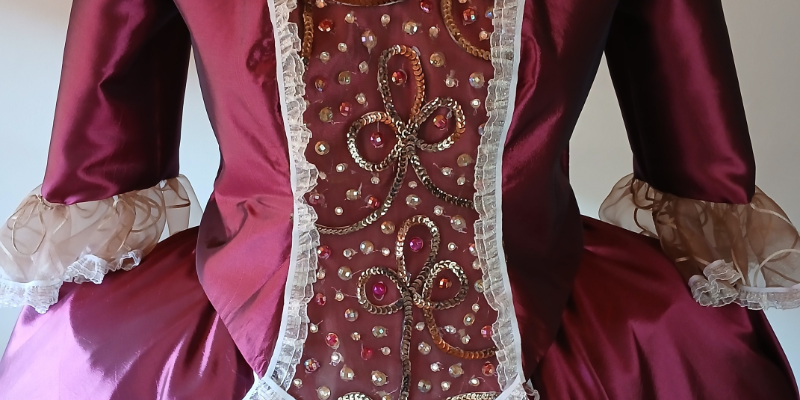Finally, it’s time for the big reveal. Creating a costume for a production like “Dance…no matter what” is both a challenge and a joy, especially when you’re aiming to capture the grandeur and elegance of Marie Antoinette’s era. For this particular ballet costume, we wanted to bring opulence and drama while maintaining comfort and practicality for the dancer. One of the key aspects of the design process was embellishing the costume to elevate its beauty, creating a cohesive and stunning look that would stand out on stage.
Fabric Choice: Starting with Simplicity
Initially, we chose a plain fabric for the bodice and skirt, opting not to go for a brocade with intricate patterns woven directly into the threads. While brocade would have been ideal for this era’s look, the cost and weight of such a fabric weren’t practical for the fast-paced movements of the ballet and the stage lights would wash out the colour. Instead, we decided to work with the vibrant Tafetta fabric in crimson colour and embellish it to reflect the aristocratic style we were going for.
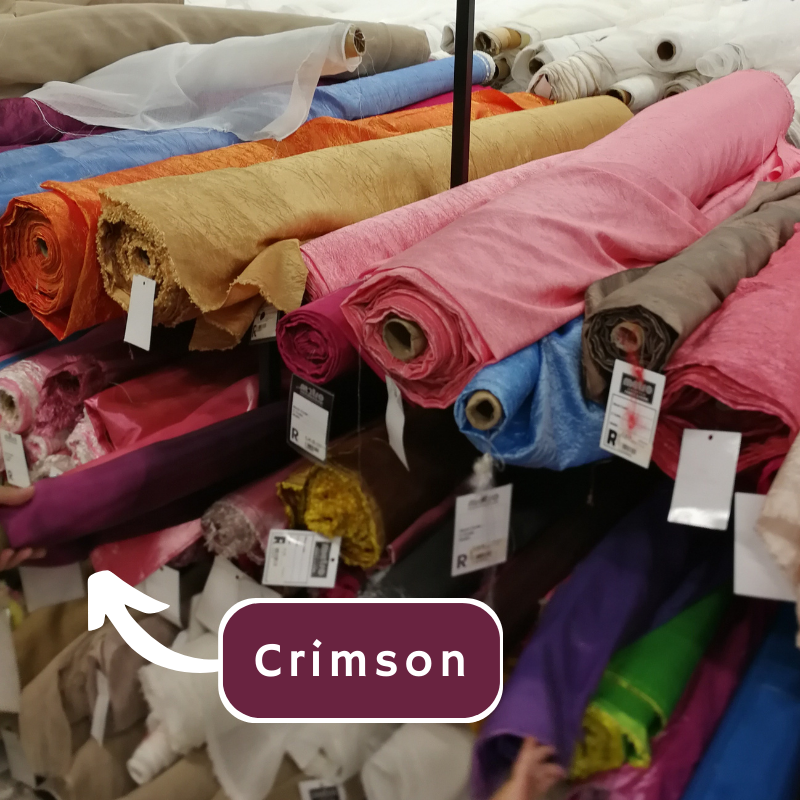
Step 1: Adding a Voile Panel with Stitched Patterns
The first step was to add a touch of luxury and depth to the centre front panel of the bodice. We decided to add a panel of voile with delicate, stitched patterns to the centre front. Voile has a lovely soft finish and the stitch patterns added subtle texture and visual interest to the otherwise plain fabric.
To enhance the elegance of the piece and tie it back to the aristocratic style, we then added a combination of sequins and rhinestones over the voile. The small amount of sparkle from the sequins and the shine of the rhinestones brought the costume to life, catching the light just right and adding a bit of bling to represent the elegance of nobility.
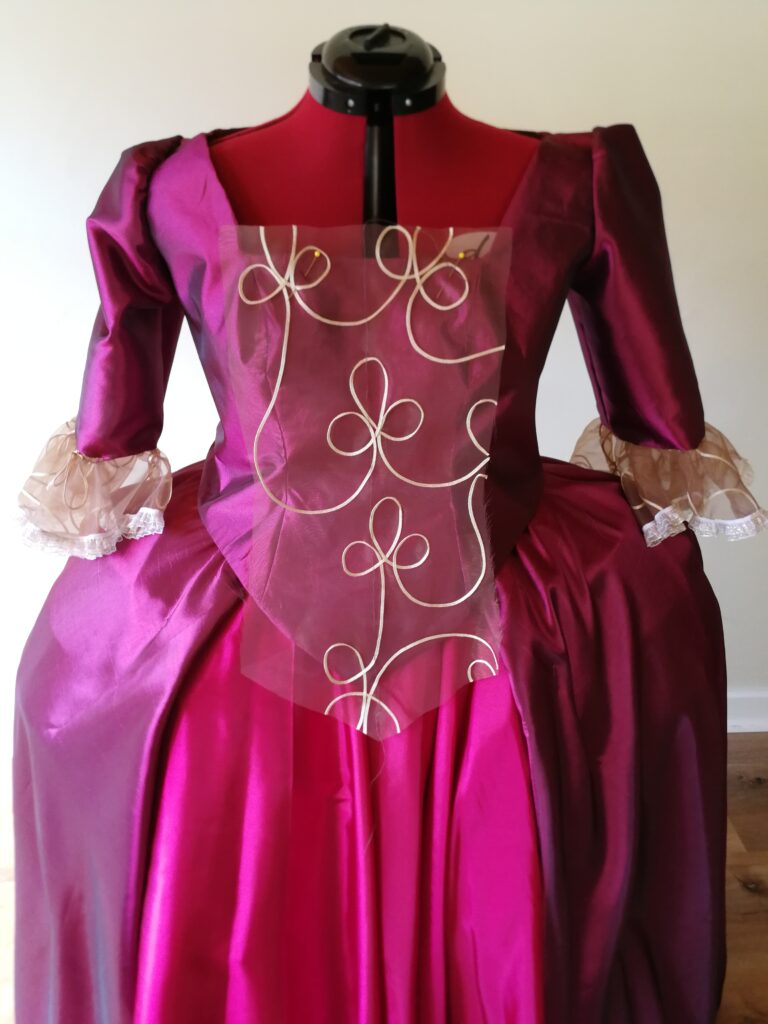
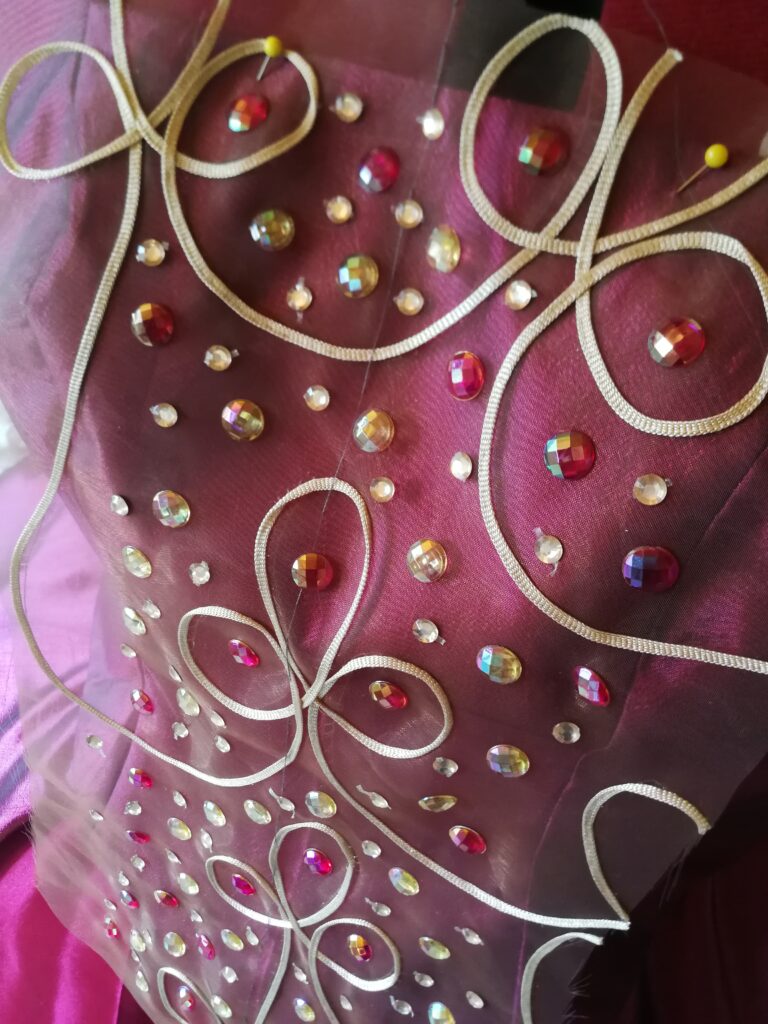
Step 2: Dramatic Ruffles for the Sleeve Hem
Next, we turned our attention to the sleeve hem, where we wanted to introduce a bit more drama. Taking inspiration from the elaborate fashion of the 18th century, we chose to add a ruffle to the sleeve hem using the same voile fabric we had used for the centre front panel. The reason behind this was simple: the ruffle added movement and visual interest while also maintaining a sense of cohesion across the whole design.
For the pattern, we used the same method for drafting a circle skirt pattern, we used the circumference of the sleeve for the inside measurement and then just made the back where the elbow will be, longer than the front.
This was not just about decoration—it was about creating a fluid and connected look. The ruffled fabric echoed the elegance and femininity of the era and created a sense of balance across the costume.
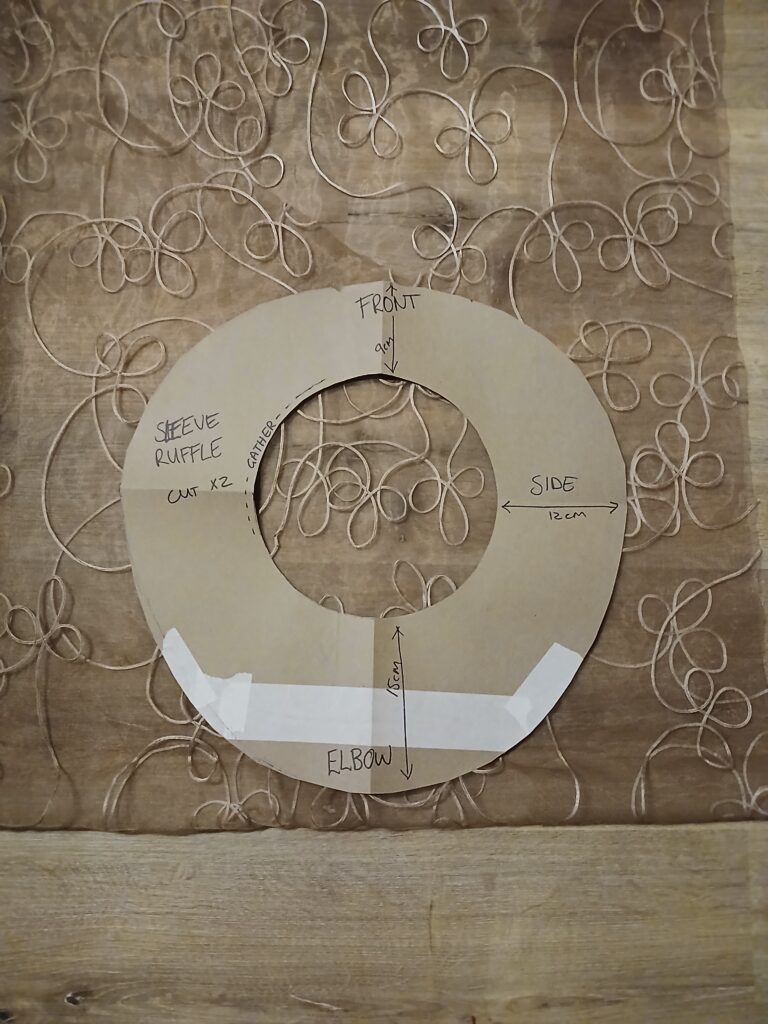
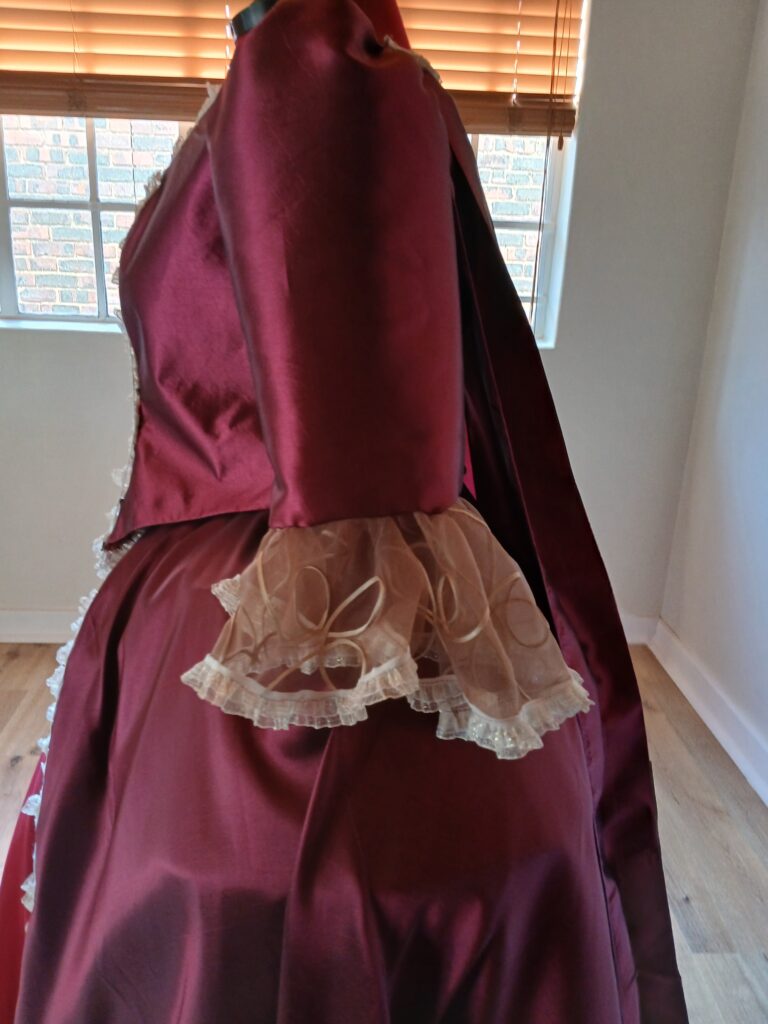
Step 3: Adding Contrasting Trim for Cohesion
To add a bit more definition and elegance, we decided to incorporate a contrasting coloured ruffled trim along the princess styleline of the bodice and the skirt. This trim was a subtle, but impactful addition that enhanced the overall silhouette, helping to guide the eye down the costume and emphasise the clean lines. The trim also helped tie the bodice and skirt together, ensuring that both parts of the costume felt integrated and well-thought-out.
We repeated this contrasting trim in several other places on the costume to create a more cohesive design. The trim was added to:
- The neckline for a finished, elegant look.
- The V-point of the bodice to enhance the shape and provide symmetry.
- The back of the train at the shoulders to tie in the front and the back seamlessly.
- The sleeve hems to complete the ruffled look and create consistency throughout.
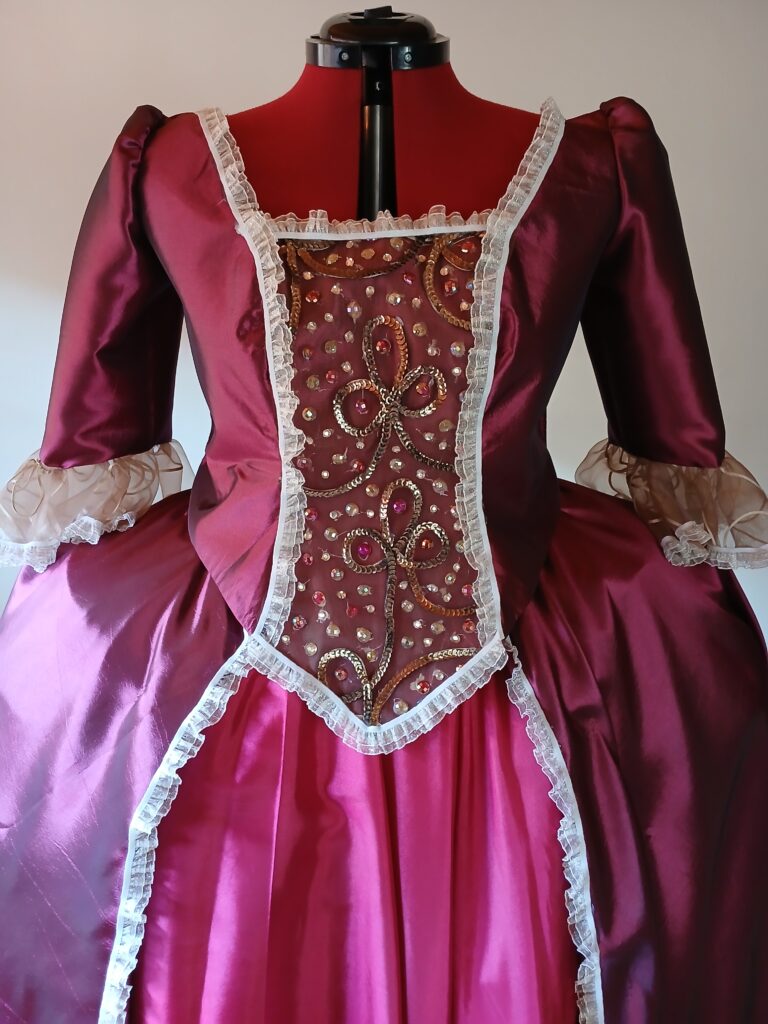
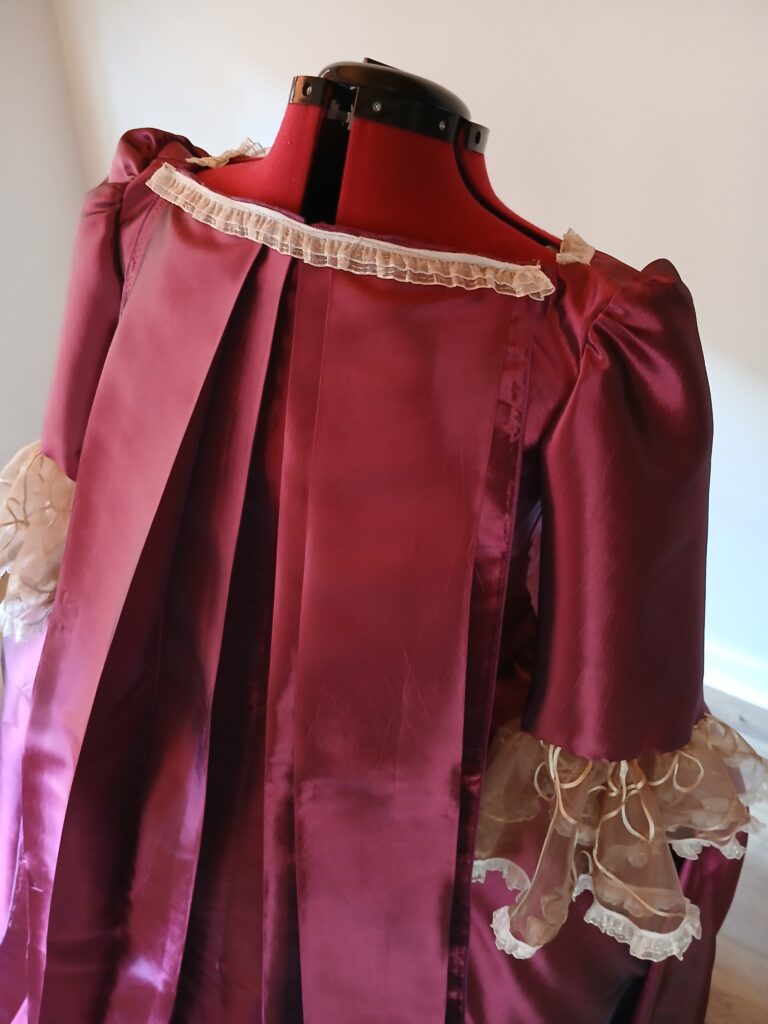
Step 4: The Importance of Consistency in Design
One of the key lessons we learned during this process was the importance of repeating design elements in various areas of the costume. By using the same contrasting trim and voile fabric in multiple locations, we created a harmonious and cohesive look. This repetition not only brought together the different elements of the design, but also made the costume feel more thoughtfully constructed.
Here’s a tip for fellow designers and crafters: Using the same trim in multiple places doesn’t just save money—it also ensures a more cohesive and well-planned look. When you repeat design elements, you avoid the costume looking like a patchwork of random decisions. Instead, it feels more like a carefully considered, professional ensemble and that’s exactly the effect we wanted to achieve with this Marie Antoinette-inspired design.
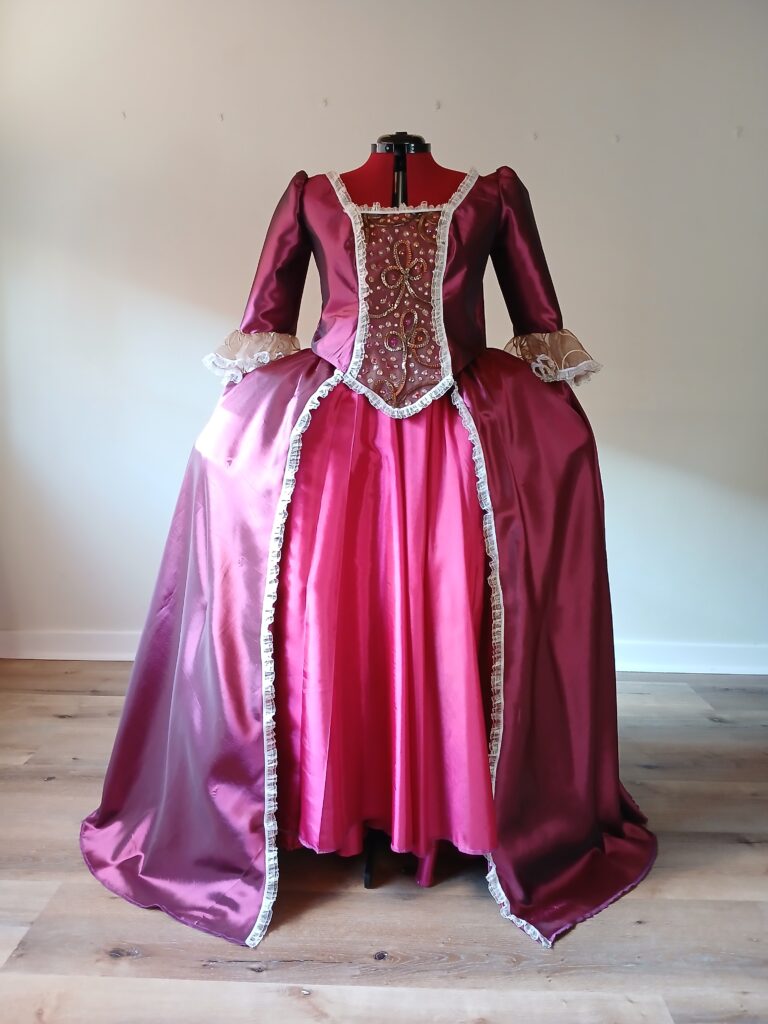
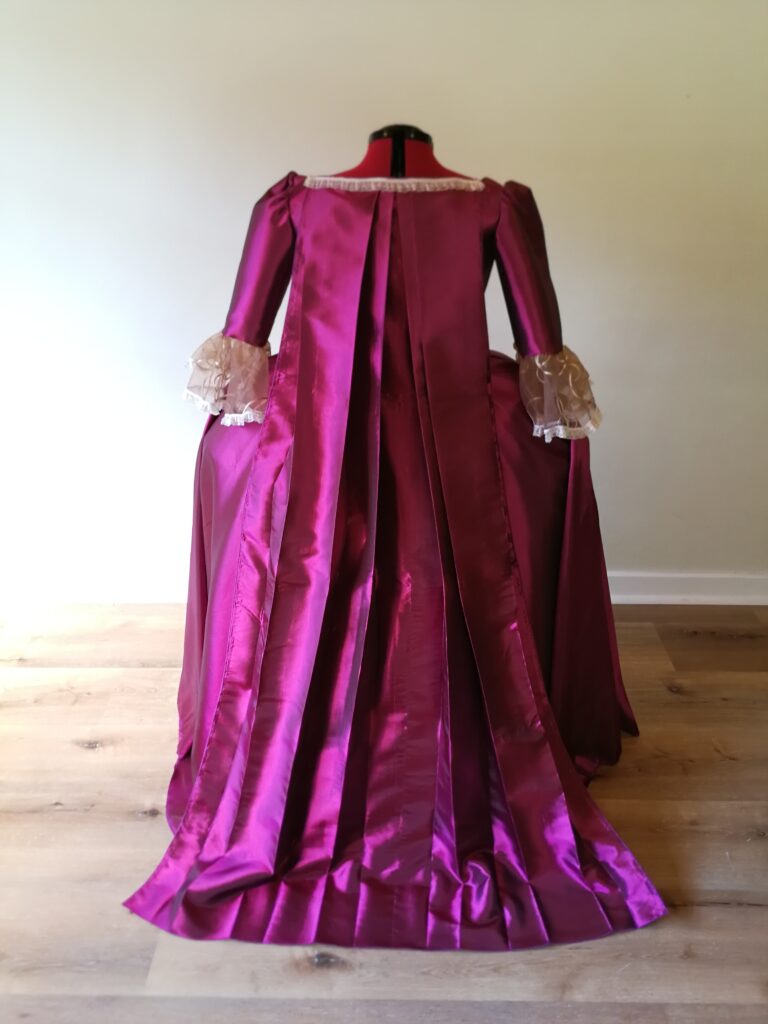
Embellishing a costume is an opportunity to elevate its impact and in this case, it was the careful addition of embellishments like sequins, rhinestones, ruffles and contrasting trims that gave the Marie Antoinette ballet costume its final, regal touch. Every choice—from the fabric to the trims—was made with the intention of creating a seamless, cohesive look that would make a striking visual impact on stage, while still allowing the dancer to move freely and comfortably.
For anyone working on similar projects, remember that simplicity can be beautiful, but thoughtful embellishment can truly make your design shine. By adding subtle details in strategic places, you can elevate the overall aesthetic and create a stunning visual experience that will captivate your audience.
Thanks for reading!
The show must go on! In the final blog post of the NEW Marie-Antoinette series, I’ll share some live stage photos and discuss troubleshooting 10 minutes before Marie-Antoinette had to be on stage in the opening of the Les Danseuses dance production “Dance…no matter what”.
Blog posts in the Marie-Antoinette series:
PART 1: Versailles
PART 2: What else can go wrong?
PART 3: How many patterns does it take to make one dress?
PART 4: Creating the drama element…the Skirt
PART 5: The most intricate and time consuming part…the Bodice
PART 6: Fitting…the most important step
PART 7: What is a Queen without a train?
PART 8: A gown fit for a Queen!
Upcoming blog posts in the Marie-Antoinette series:
PART 9: The show must go on
Online Courses
If you are interested in learning how to sew or design your own patterns, sign up for one of our online courses to start in the comfort of your own home. Beginner, Intermediate & Advanced courses available to suit your skill level. Sign up now at https://online.craftchic.co.za/
Digital Patterns
Visit our online store at online store and get your digital pdf patterns for your favourite items. There is a variety of patterns available, including dresses, skirts, tops, pants, casual wear and everyday household items.


